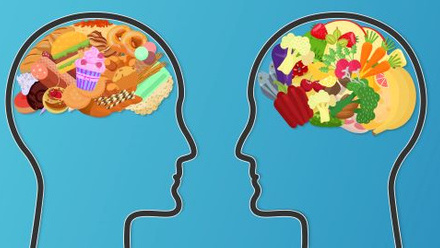Introduction
Background
ARFID is an eating disorder, newly categorised as a diagnosis in DSM-5 in 2013, but previously referred to by different names such as selective eating disorder, fussy eating, feeding disorder, picky eating, feeding disorder of infancy and early childhood7. Dietitians have been seeing patients with forms of restricted eating (some now known to have met the criteria for ARFID) for many years in a variety of settings including paediatrics, community child and adolescent mental health services (CAMHS), and adult services, such as gastroenterology and community.
Many Trusts and Health Boards do not have a dedicated clinical pathway or service for providing assessment and treatment to children, young people (YP) or adults with ARFID. Referrals for ARFID present in multiple services but as they do not fit ‘criteria’ and/or are unable to access clinical expertise they fall between the gaps. The clinical expertise is not present within any one service to meet the complex needs of this group of children. There are no evidence / practice guidelines which clearly describe the service specifications and clinical pathway required to manage this population.
Pathways need to be created locally to determine appropriate multi-disciplinary assessment and treatment for CYP with ARFID. This has major implication for funding/resourcing of dietetic time within services and specifically many CAMHS and CYP Eating Disorders Services and paediatrics where these patients are currently being signposted.
ARFID criteria
ARFID is a feeding disorder manifested by persistent failure to meet appropriate nutritional and/or energy needs associated with at least one of the following criteria: significant nutritional deficiency, significant weight loss or failure to gain adequate weight, dependence on oral supplementation or tube feeding, and/or marked interference with psychosocial functioning. Avoidant restrictive feeding behaviours may arise because of poor tolerance of specific sensory-related aspects of food, fear of adverse consequences of feeding, and/or an overall lack of interest in food or feeding as classified in World Health Organization International Classification of Diseases, 11th Revision (ICD-11) definitions.8
References
- Yule, S.; Wanik, J.; Holm, E.R.; Bruder M.B.; Shanley, E.; Sherman, C.Q.; Fitterman, M.; Lerner, J.; Marcello, M.; Parenchuck, N.; Roman-White, C.; Ziff, M. (2021). Nutritional Deficiency Disease Secondary to ARFID Symptoms Associated with Autism and the Broad Autism Phenotype: A Qualitative Systematic Review of Case Reports and Case Series. Journal of the Academy of Nutrition and Dietetics, 12:3.
- Schmidt, R.; Hiemisch, A; Kiess, W.; von Klitzing, K.; Schlensog-Schuster, F.; Hilbert, A. (2021). Macro- and Micronutrient Intake in Children with Avoidant/Restrictive Food Intake Disorder. Nutrients, 13, 400.
- Yanagimoto, Y.; Ishizaki, Y.; Kaneko, K. (2020). Iron Deficiency anaemia, stunted growth and developmental delay due to ARFID in ASD. BioPsychoSocial Medicine; 14.
- Farag, F.; Sims, A.; Strudwick, K.; Carrasco, J.; Waters, A.; Ford, V.; Hopkins, J.; Whitlingum, G.; Absoud, M.; Kelly, V.B. (2021). Avoidant/ Restrictive Food Intake Disorder and Autism Spectrum Disorder: Clinical Implications for Assessment and Management. Developmental Medicine and Child Neurology; 64:2, 176-182.
- Harshman, S.G.; Wons O.; Rogers, M.S.; Izquierdo, A.M.; Pulumo, R.L.; Asanza, E.; Misra M.; Lawson, E.A.; Eddy K.T.; Thomas, J.J.; Holmes, T.M.; Micali N. (2019). A diet high in processed foods, total carbohydrates and added sugars, and low in vegetables and protein is characteristic of youth with avoidant/restrictive food intake disorder Nutrients; 11:9.
- Heruc, G.; Hart, S.; Stiles, G.; Fleming, K.; Casey, A.; Sutherland, F.; Jeffrey, S.; Robertson, M.; Hurst, K. (2020). ANZAED Practice and training standards for dietitians providing eating disorder treatment. Journal of Eating Disorders 8:77.
- American Psychiatric Association (2013). Diagnostic and statistical manual of mental disorders (5th ed.).
- World Health Organisation. (2018). International Classification of Diseases for mortality and morbidity statistics (11th Revision).
- Stewart, P.A.; Hyman, S.L.; Schmidt, B.L.; Johnson, C.R.; Jill James, S.; Manning-Courtney, P. (2015). Dietary Supplementation in Children with Autism Spectrum Disorders: Common, Insufficient, and Excessive. Journal of the Academy of Nutrition and Dietetics 115:8, 1237-1248.
- Zucker, N.; La Via, M.; Craske, M.G.; Foukal, M.; Harris, A.; Datta, N.; Savereide, E.; Maslow, G. (2019). Feeling and Body Investigators (FBI) – ARFID division: an acceptance-based interoceptive exposure treatment for children with ARFID. International Journal of Eating Disorders, 52:2, 466-472.
- Williams, K.E.; Hendy, H.M.; Field, D.G.; Belousov, Y.; Riegel, K.; Harclerode, W. (2015). Implications of Avoidant/Restrictive Food Intake Disorder (ARFID) on Children with Feeding Problems, Children's Health Care, 44:4, 307-321.
- Lucarelli, L.; Sechi, C.; Cimino, S.; and Chatoor, I. (2018). Avoidant/Restrictive Food Intake Disorder: A Longitudinal Study of Malnutrition and Psychopathological Risk Factors From 2 to 11 Years of Age. Front. Psychol. 9, 1608.
- Taylor, C.M.; Steerm, C.D.; Hays, N.P.; Emmett, P. (2019). Growth and body composition in children who are picky eaters: a longitudinal view. European Journal of Clinical Nutrition, 73, 869–878.
- Chandran, J.J.; Anderson, G.; Kennedy, A.; Kohn, M.; Clarke, S. (2015). Subacute combined degeneration of the spinal cord in an adolescent male with avoidant/restrictive food intake disorder: A clinical case report. Int. J. Eat. Disorders. 48, 1176–1179.
- Chiarello, F.; Marini, E.; Ballerini, A.; Ricca, V. (2018). Optic neuropathy due to nutritional deficiency in a male adolescent with Avoidant/Restrictive Food Intake Disorder: A case report. Eat. Weight Disord. 23, 533–535.
- Görmez, A.; Kılıç, A.; Kırpınar, ˙I. (2018). Avoidant/Restrictive Food Intake Disorder: An adult case responding to cognitive behavioral therapy. Clin. Case Stud., 17, 443–452.
- Strandjord, S.E.; Sieke, E.H.; Richmond, M.; Rome, E.S (2015). Avoidant/restrictive food intake disorder: Illness and hospital course in patients hospitalized for nutritional insufficiency. J. Adolesc. Health, 57, 673–678.
- Bryant-Waugh, R. (2013). Avoidant restrictive food intake disorder: An illustrative case example. Int. J. Eat. Disord., 46, 420–423.
- Mari-Bauset, S.; llopis-Gonsalez, A.; Zazpe-Garcia, I.; Mari-Sanchis, A.; Morales-Suarez-Varela, M. (2015). Nutritional status of children with autism spectrum disorders (ASDs): a case-control study. Journal of Autism and Developmental Disorders, 45:203–12.
- Sidrak, S.; Yoong, T. and Woolfenden, S. (2014). Iron deficiency in children with global developmental delay and autism spectrum disorder. J Paediatr Child Health, 50:356–61.
- Sharp, W.G.; Postorino, V.; McCracken, C.E.; Berry, R.C.; Criado, K.K.; Burrell, T.L.; Scahill, L. (2018) Nutrient Status, and Growth Parameters in Children with Autism Spectrum Disorder and Severe Food Selectivity. J Acad Nutr Diet., 118:10, 1943-1950.
- Taylor, C.M.; Northstone, K.; Wernimont, S.M.; Emmett, P. (2016). Macro and micronutrient intakes in picky eaters: a cause for concern. American Journal of Clinical Nutrition, 104,1647–56.
- Galloway, A.T.; Fiorito, L.; Lee, Y.; Birch, L.L. (2005). Parental pressure, dietary patterns, and weight status among girls who are “picky eaters”. Journal of American Diet Assoc., 105:541–8.
- Gerasimidis, K.; Bronsky, J.; Catchpole, A. et al. (2020). Assessment and interpretation of vitamin and trace element status in sick children: a position paper from the European society for paediatric gastroenterology hepatology, and nutrition committee on nutrition. Journal of Paediatric Gastroenterology and Nutrition, 70: 6 873-881.
- Golden, M. (2009). Proposed recommended nutrient densities for moderately malnourished children. Food Nutrition Bull 30 (3 Suppl), S267-342.
- Benezech, S.; Hartmann, C.; Morfin, D.; Bertrand, Y.; Domenach, C. (2020). Is it leukemia, doctor? No, it’s scurvy induced by an ARFID! Eur J Clin Nutr 74, 1247–1249.
- Likhitweerawong, N.; Boonchooduang, N.; Morakote, W. et al. (2021). Scurvy mimicking as systemic lupus erythematosus. BMJ Case Reports, 14.
- Munro, L. and Meyer, R.W. (2021). ARFID: An introduction to diagnosis & Management. University of Winchester. https://store.winchester.ac.uk/shortcourses/faculty-of-health-and-wellbeing/healthcare-professionals/arfid-anintroduction-to-diagnosis-and-management [Accessed online March 2021]
- Nicely, T.A.; Lane-Loney, S.; Masciulli, E.; Hollenbeck, C.S.; Ornstein, R.M. (2014) Prevalence and characteristics of avoidant/restrictive food intake disorder in a cohort of young patients in day treatment for eating disorders. Journal of Eating Disorders, 2014, 2:21.
- British Dietetic Association (2016). Safe Staffing Safe Workload Guidance. https://www.bda.uk.com/uploads/assets/53c343b0-c925-4513-a5d6d08b9b24ba2a/Safe-Staffing-Workload-Guidance.pdf [Accessed June 2022]
- NHS England and NHS Improvement (2019). Job planning the clinical workforce – allied health professionals - A best practice guide. https://www.england.nhs.uk/ahp/allied-health-professionals-job-planning-abest-practice-guide/ [Accessed June 2022]
Authors and acknowledgements
Angharad Banner: Highly Specialist Paediatric & CAMHS Dietitian at Cwm Taf Morgannwg Health Board. Freelance Dietitian & Public Relations Officer of the Paediatric Specialist Group of the BDA.
Paola Falcoski: Advanced Specialist Eating Disorder Dietitian, Bedfordshire & Luton CAMHS Eating Disorders Team. Freelance Dietitian.
Claire Knight: Clinical Lead Dietitian for Nottingham Child & Adolescent Eating Disorder Service. Chair of the BDA Specialist Interest Group for CAMHS. Project Lead NHS England ARFID Pilot Study for the Midlands Region 2019/2020.
Dr Elizabeth Roberts: Advanced Specialist Eating Disorders Dietitian, Somerset NHS Foundation Trust.
Michelle Simpson: Lead Specialist Paediatric Eating Disorders Dietitian, Hampshire CAMHS Eating Disorders Team.
Sian Taylor: Clinical Lead Dietitian & Operations Manager, CAMHS, Aneurin Bevan Health Board. Chair of the ARFID All Age Specialist Interest Group (ARFID SIG).
Clare Thornton-Wood: Paediatric Dietitian - Clinical Dietetic Lead Feeding and Eating Disorders at Great Ormond Street Hospital for Children NHS Foundation Trust. BDA Media Spokesperson.
Mala Watts: Specialist Paediatric Eating Disorder Dietitian, Buckinghamshire Eating Disorder Service, Oxford Health NHS Foundation Trust. Education Lead ARFID SIG. Freelance Dietitian.
This position paper has been written by members of the ARFID Special Interest Group (ARFID SIG). The ARFID SIG is part of the British Dietetic Association (BDA) CAMHS sub-group of the Mental Health SIG. The authors collaborated with members of the Paediatric Specialist Group. ARFID Awareness UK (AAUK) were also consulted (AAUK) to include the voice of patients and carers.
The need for a position paper came about from the recognition of ARFID as an eating disorder in both the DSM-5 criteria and ICD11 in 2013 and 2022 respectively. This position paper has focused on Children and Young People (CYP).
A group of dedicated and highly specialist dietitians in eating disorders and paediatrics UK wide convened. The draft was circulated to specialist ARFID colleagues including paediatricians, psychologists, and dietitians.
Our acknowledgements go to Glenn Waller, Rosan Meyer, Luise Marino, Rachel Bryant-Waugh, Damien Wood, Gillian Harris, Susan Meredith and ARFID Awareness UK.







